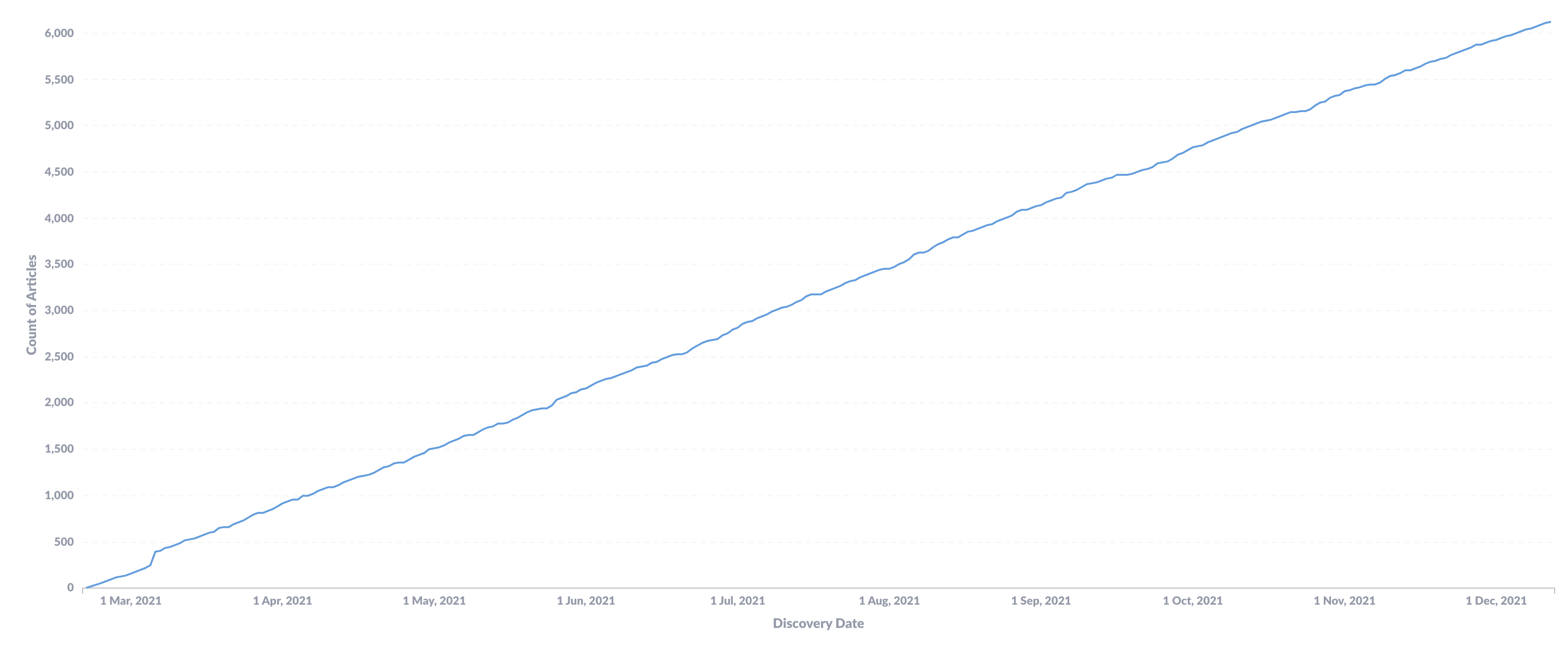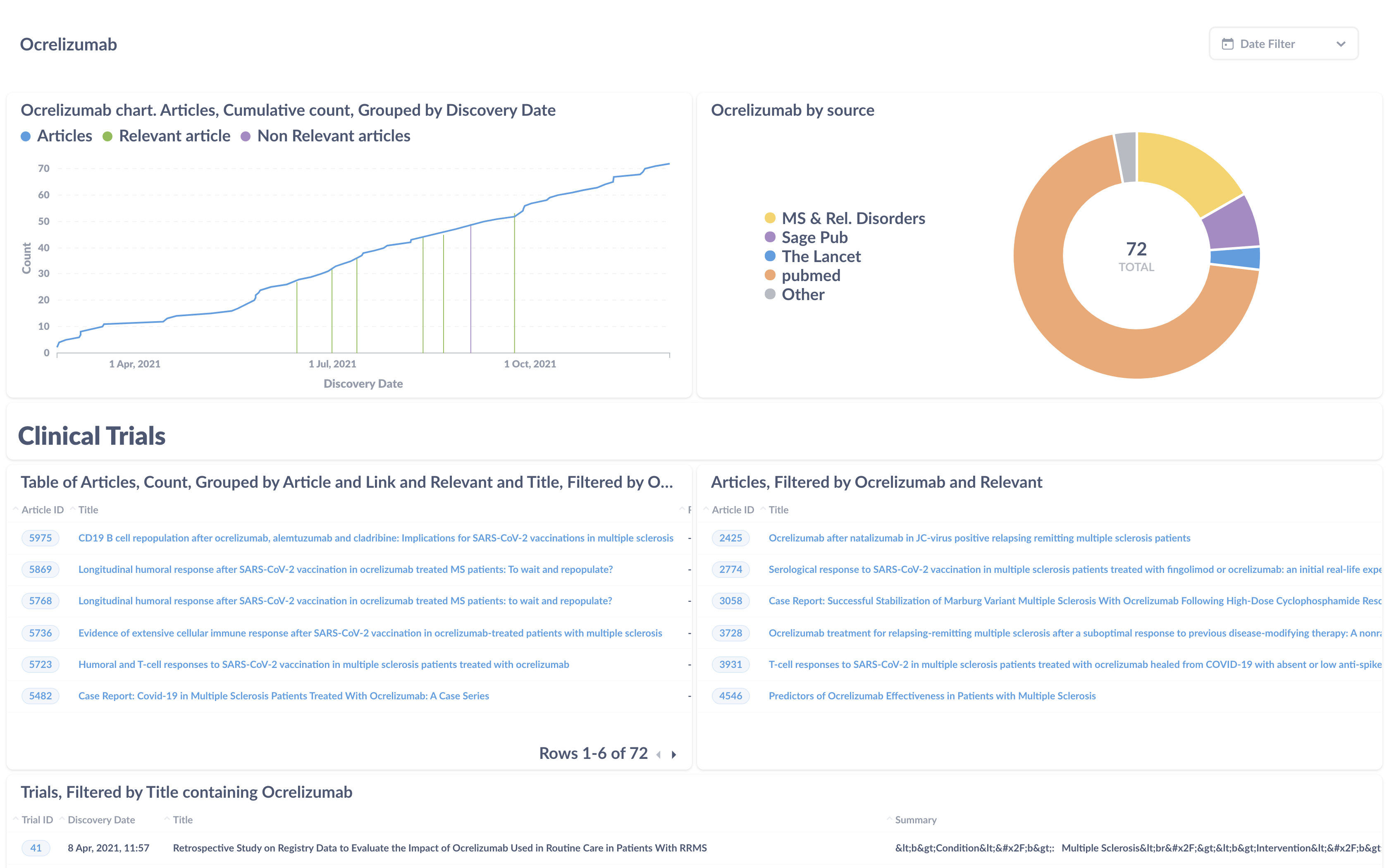Are we holding back on applying Artificial Intelligence to our lives? Yes, because most of us think it means killer robots from the future. In its current state artificial intelligence is as dangerous as the tasks we give it. Here we are going to describe a practical use for this technology in medical research.
Gregory MS is an Artificial Intelligence (AI) that is constantly finding relevant research for people living with multiple sclerosis (MS). It has the potential to help speed up discovery of new therapies and medication by giving everyone access to the database of articles and help us draw a path for better research.
In less than a year Gregory found, indexed, and cross referenced over 6,000 articles
And now, how can we improve the research and implementation of new therapies and drugs using a tool like Gregory?
Medical research is a complex process that involves a thorough procedure, and clinical trials must follow rigid ethical guidelines. My field is communication and I don’t pretend to be an expert in either of these.
What I do know is how the web works and how technology can remove obstacles. And I know how to design a strategy. Therefore, my goal with Gregory was to solve information overload and foster innovation.
The first step is understanding the landscape
Researchers on MS know the goal better than anyone. Stop the attack on the central nervous system, restore the motor and cognitive functions as much as possible.
Knowing the landscape is much more than having your eyes on the destination, it’s knowing the different paths available to get there. It’s also being aware of what everyone else on the field is doing to get there. And it goes without saying, it’s not about who gets there first but how fast we get there.
This is where Gregory steps in. The database has the potential to show us the different paths we are exploring to reach this goal.
As soon as we can map out the current research we can plan a better use of time and resources. And as more and more therapies and medications show promise, we can set up tools to monitor their progress and adoption.
There may be other impediments like patents, and access to resources, but that is out of this scope.

Above, the cumulative count of new articles matching the search terms of Multiple Sclerosis, autoimmune encephalomyelitis, encephalomyelitis, immune tolerance, myelin.
Communicate
Gregory is a machine built to help humans. But he can do more than just observe, index, and analyse. Right now he is on twitter sharing his findings and sends out a weekly newsletter to relevant stakeholders (doctors and researchers).
This week, Gregory got an upgrade with the addition of Metabase, a tool that allows us to build dashboards with ease.
Metabase was used to improve the search page, giving it more features and real time results. It’s a powerful tool and I plan on using it on the Observatory section to provide more data around each search term.
People with access to the Metabase backoffice can query the articles around a number of fields, from source to summary and title. I would like to also add related articles to the database, based on noun-phrases in titles.
Do you have an idea of a good new feature? I take any suggestions on improvements seriously and apply them when I can.
Implement
This is where we let go of the reigns. The decision to pursue a path of research needs to come from informed professionals and not from Gregory. There is however the possibility to monitor how a certain path develops and if it is successful in some way.
Part of this monitoring is already being done in the Observatory pages, like the page for Haematopoietic Stem Cell Transplantation (HSTC) where we can see what articles and trials match this specific search term. Another example is shown below, using Ocrelizumab a drug currently being used to treat MS.
Open this interactive dashboard.
Evaluate
The evaluation phase is linked to the monitoring and can be made easier in a number of ways. With Gregory we can focus on a specific therapy or drug and evaluate the studies and trials in a quicker way. Another option is to classify a sample of the database and let Gregory learn from us.
There is a lot of efficiency to be gained from categorising a subset of 1,000 articles, so that the AI algorithm can apply the same login to 6,000.
And what if we are wrong?
The system learns from us, and right now the algorithm is retrained once every other month. So even if it doesn’t feel perfect, the method is solid. We re-evaluate it’s efficacy as a way to drink or own poison and improve it constantly, being careful to allow access to the full database so that a third party can audit the results if necessary.
Is that everything?
Not at all. The more corpus we gather the more we can ask from Gregory. We can analyse the research to find commonalities; we can discover where the promising research is coming from;
Ideally, Gregory will be able to track not just the research and development but also the adoption of these new therapies. The current roadmap looks like this.
🟢 Complete 🟡 In progress ⬜️ Next steps
- 🟢 Find articles as they are published
- 🟢 Identify articles relevant to improve Quality of Life (QOL) or ameliorate symptoms
- 🟢 Track new therapies in the observatory
- 🟢 Send a free newsletter to relevant stakeholders
- 🟡 Inform of related clinical trials
- 🟡 Allow everyone to browse and analyse the database
- ⬜️ Spread the word about clinical trials in Portugal
- ⬜️ Track acceptance of new therapies and drugs
- ⬜️ Help researchers optimize their efforts
There are more details on Gregory’s website.
There are many more uses for an AI algorithm like this, the most astouding I have found so far is the Elicit.org website. Their system allow anyone to fire up a quick machine learning or AI analysis of a body of text or list of articles.
So what’s left ?
People. It’s been hard to get the word out about Gregory and the number of features he provides to this segment of Neurology.
I’m spread pretty thin between developing, designing the site, and publicising it. All I ask from others is that they do what they can so that more people know about the tool and use it.
If you want to help or work for a company that can, please spread the word. My goal is to get more people on board and make Gregory a valuable tool for MS Research.
And Gregory MS is built without a commercial intent, I make it a point to keep the project free for everyone to use.
rawpixel


